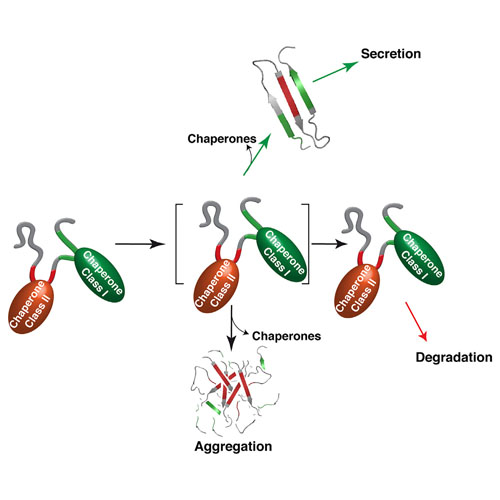Members of the Hsp70 Family Recognize Distinct Types of Sequences to Execute ER Quality Control
18-Aug-2016
Molecular Cell, 63, 1–14, http://dx.doi.org/10.1016/j.molcel.2016.07.012
Molecular Cell, online article
Protein maturation in the endoplasmic reticulum is controlled by multiple chaperones, but how they recognize and determine the fate of their clients remains unclear. We developed an in vivo peptide library covering substrates of the ER Hsp70 system: BiP, Grp170, and three of BiP’s DnaJ-family co-factors (ERdj3, ERdj4, and ERdj5). In vivo binding studies revealed that sites for pro-folding chaperones BiP and ERdj3 were frequent and dispersed throughout the clients, whereas Grp170, ERdj4, and ERdj5 specifically recognized a distinct type of rarer sequence with a high predicted aggregation potential. Mutational analyses provided insights into sequence recognition characteristics for these pro-degradation chaperones, which could be readily introduced or disrupted, allowing the consequences for client fates to be determined. Our data reveal unanticipated diversity in recognition sequences for chaperones; establish a sequence-encoded interplay between protein folding, aggregation, and degradation; and highlight the ability of clients to co-evolve with chaperones, ensuring quality control.











